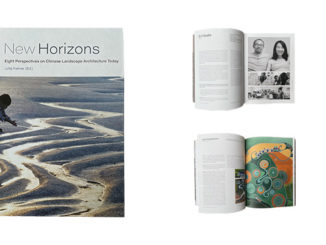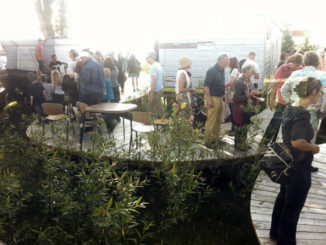
The Cultural Landscape Foundation (TCLF), recently released a new Pioneers of Landscape Design video oral history with the landscape architect Claude Cormier, the nineteenth in the series, which TCLF launched in 2003 to document, collect, and preserve first-hand information from pioneering landscape architects. The 115-minute-long Cormier oral history is parsed into 28 two- to five-minute clips and organized under the themes of “biography,” “design,” and “projects.” In addition to producing and distributing the Cormier oral history, TCLF has produced and published a written transcript of the oral history and collected a series of written recollections from friends and colleagues. The oral history interviews and principal photography were done August 15-18, 2023; Claude Cormier passed away on September 15, 2023.
Raised on a farm and sugarbush near Princeville, Québec, Cormier received a bachelor’s degree in Agronomy from the University of Guelph in 1982 and a B.L.A. from the University of Toronto in 1986. In the early 1990s he enrolled in the Harvard University Graduate School of Design, where he was influenced by the theories of Frederick Law Olmsted, Sr. and Martha Schwartz (Cormier would later refer to the pair as his “parents.”) After graduating with a Master in Design Studies degree in 1994, Cormier established the landscape architecture firm Claude Cormier Architectes Paysagistes (now CCxA) in 1995.
Throughout his prolific career Cormier has humanized and transformed the urban civic realm often blurring the lines between landscape architecture and art. Rooted in rigorous historical, cultural, and ecological analysis, Cormier’s parks, plazas, urban waterfronts, and temporary and permanent installations often take everyday landscape features – rocks, fountains, trees, and umbrellas – and transforms their traditional associations by super-sizing them, slicing them in half, or altering their colors. His particular joie de vivre infuses his complex ground planes and sculptural forms that animate space and elicit public engagement and joyfulness.
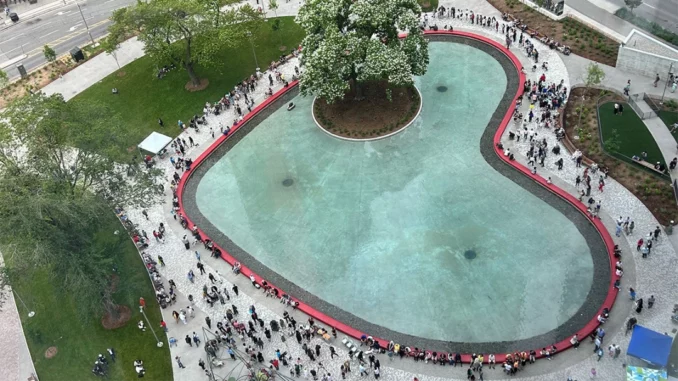
Thirteen of Cormier’s significant extant projects are now included in the What’s Out There Database of cultural landscapes including: Lipstick Forest (2002), featuring 53 pink concrete tree trunks in the ground level of the Montréal Convention Center; Dorchester Square (2010), an intervention in a historic Montréal park that includes Venetian-style bridges and a large, vertically sliced Victorian-style fountain; Sugar Beach (2010), a former two-acre parking lot on Lake Ontario in Toronto transformed
into a sandy beach with permanent giant pink umbrellas; and Toronto’s Berczy Park (2017), beloved for its multi-tiered Victorian fountain with a panoply of life-size cast bronze water-spewing dogs. His two last major works, The Ring (2022), with a 98-foot-diameter stainless steel ring suspended between two 1960s modernist buildings that frames a view to the Frederick Law Olmsted, Sr.- designed Mount Royal Park, and Love Park (2023), highlighted by a 180-foot-diameter heart-shaped water basin, serve as love letters to his two cherished cities, Montréal, and Toronto, respectively.
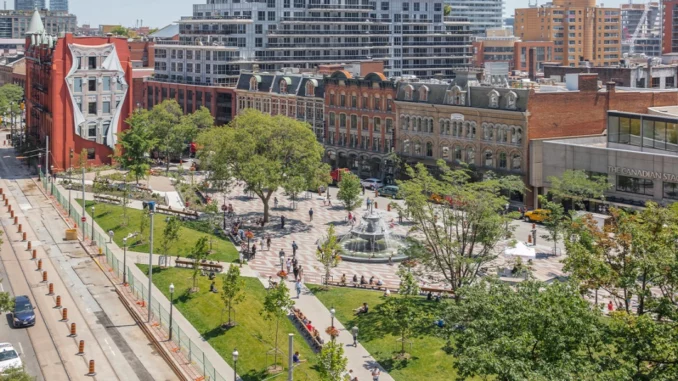
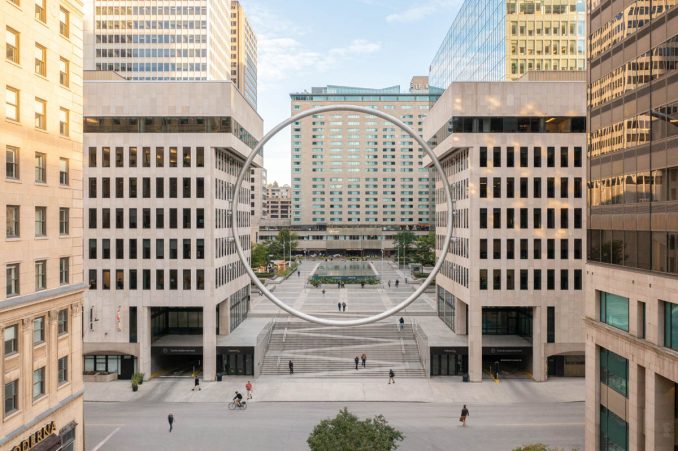
Cormier’s gay identity was often an integral part of his practice. Projects, including the installations Pink Balls (2011-2016) and 18 Shades of Gay (2017-2019) spoke to his sexual orientation and his desire to create universally inclusive environments.
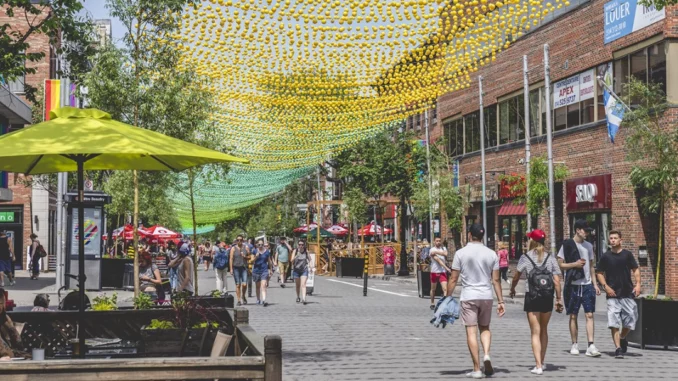
In 2019 Cormier was diagnosed with Li-Fraumeni Syndrome, a rare genetic condition that predisposes carriers to multiple cancers. Cormier passed away at his Montréal home on September 15, 2023.
The Cormier oral history was shot on location August 15-18, 2023 at Cormier’s home and office in Montréal, at significant projects in Montréal, and in October 2023 at significant projects in Toronto.
“Landscape architecture has always had a complicated relationship with history. Some practitioners ignore it or are gleefully unaware, while others view it as an unnecessary shackle. While some deploy research-based solutions (an essential requirement), which attempt to heal or restore those ecological systems that have been diminished or lost, Claude’s approach is entirely different pulverizing the notion that history and design can’t be happily wed,” said Charles A. Birnbaum, TCLF’s President & CEO.
Charles A. Birnbaum is the series executive producer and conducted the interviews; Barrett Doherty conducted the videotaping, drone photography and post-production editing.
The Cormier Pioneers oral history was made possible by Lead Sponsors: CCxA; The Hubbard Educational Foundation; and Maglin; Presenting Sponsors: Agency Landscape + Planning; DeepRoot; ERA; gh3*; KPMB; Nina-Marie Lister; and University of Toronto John H. Daniels Faculty of Architecture, Landscape, and Design; and numerous Supporting Sponsors and Friends. The American Society of Landscape Architects is the Partner in Education for the ongoing series.

